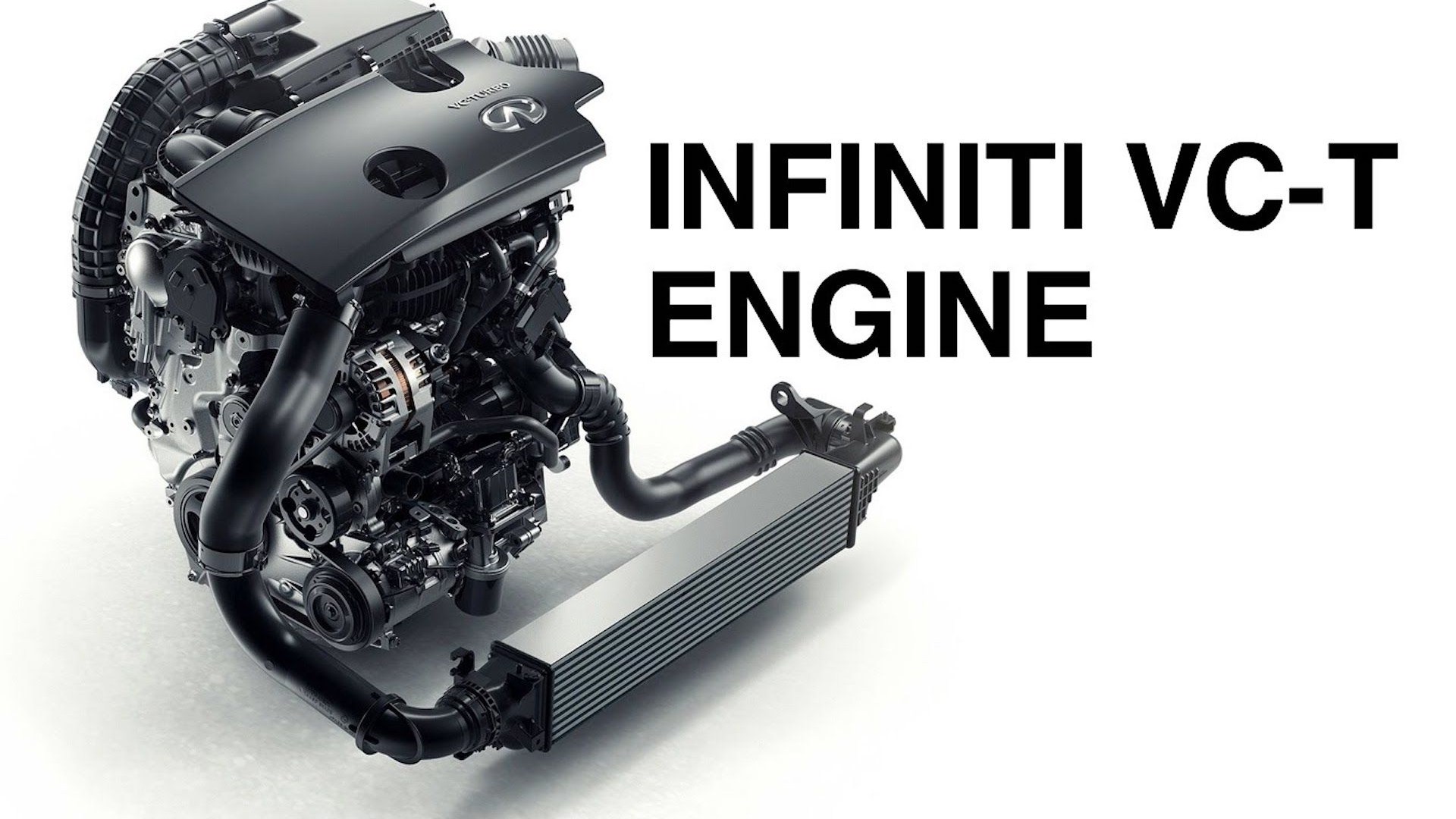How It Works
-

Your intake manifold. It takes in air and sends it to your engine's combustion chamber. This is basically the start of the combustion process. After all, you can't have combustion without air. Engineering Explained is here to walk us through the process and explain how a variable intake manifold can create more power. A longer intake runner setup is designed to provide greater power at the bottom end of the rev range. If you have shorter runners, you'll see greater horsepower numbers when the engine is up in the rev range. The best of both worlds happens when you have a variable intake...
-
 'Engineering Explained' adds Honda S2000 project car to its garage
'Engineering Explained' adds Honda S2000 project car to its garageFor some time now, Jason from Engineering Explained has been teaching us about all areas of our shared passion—and now we get to share in something a little more personal. His method of clearly explaining seemingly complex mechanical and technical parts of a car is both enjoyable and...
Jeff Glucker -
 How Infiniti's variable compression engine works
How Infiniti's variable compression engine worksYou know what variable valve timing is. You're quite familiar with Honda's VTEC system. Now Infiniti has something new for you dive into, and it's all about changing an engine's compression ratio. The Infiniti VC-T engine can change its compression ratio from a low of 8:1 to a high of 14:1. How...
Jeff Glucker -
 What's the difference between steel and rubber brake lines?
What's the difference between steel and rubber brake lines?Your car's brakes are pretty darn important. If you have lousy pedal feel, you should do something about that, right? Stopping is at least as important as going. So when you're looking to fix or upgrade your brake system, should you go with rubber lines or jump up to steel brake lines? Engineering...
Jeff Glucker -
 How much faster will street cars get to 60 mph in the future?
How much faster will street cars get to 60 mph in the future?After Tesla's announcement Tuesday that its new Model S P100D (when equipped with the optional Ludicrous Speed mode) is the fastest-accelerating car you can buy, it sure seems like everyone wants to talk about racing down a drag strip. Luckily, our pal Jason Fenske with Engineering Explained is...
Andrew Ganz -
 How to calculate vehicle cost of ownership
How to calculate vehicle cost of ownershipThe world is expensive. It's something your parents might have told you growing up, but as a child, it means little. Once you become an adult with real bills, you suddenly realize your parents weren't kidding. One of the most expensive purchases you'll likely face? A vehicle. That brings us to...
Joel Feder -

To start, let's talk about what it means to lug your engine. This is the term used to describe when you're puttering along in a higher gear than you need to be in and the engine is turning low RPMs. When you're cruising along in 6th but you should've downshifted into 4th about a half mile back, you are lugging your engine. Why is this bad? Engineering Explained is here to lay it out for you. When you lug your engine, you are forcing it to work far harder than it should. Low RPMs are fine if you're just cruising or slowing down, but when you accelerate, low revs leave your engine with a...
-
 How the charge motion control valve balances fuel economy and power
How the charge motion control valve balances fuel economy and powerWe love horsepower. We love torque. We also need to embrace fuel economy, and that's a tricky line to toe for producers of automobiles with large engines that make loud noises for enthusiastic customers. We currently live in an era of tremendous horsepower availability, yet our vehicles have also...
Jeff Glucker -
 Don't do these 5 things in a vehicle with a CVT
Don't do these 5 things in a vehicle with a CVTJason, the host of Engineering Explained, gets the first point that we were going to make right out of the way. His latest video tackles things you should or should not be doing in a vehicle equipped with a CVT. We'd say that step one is to avoid these vehicles, but as Jason points out, that is the...
Jeff Glucker -
 What's the best all-wheel-drive system?
What's the best all-wheel-drive system?All-wheel-drive systems are numerous, and some of them work in different ways. A Subaru, an Audi, and a pickup truck all have different needs to meet in powering all their wheels. They use systems that employ various different technologies, and once more our friend at Engineering Explained is here...
Jeff Glucker -
 How Audi conducts durability testing
How Audi conducts durability testingAudi recently conducted its 100th durability test, known as an "INKA" test, on a 2016 A4. INKA is the acronym for Ingolstadt Korrosion und Altern (corrosion and aging). The testing replicates 12 years of vehicle life in 19 weeks. This corrosion and aging test is conducted in five phases. First, the...
Kirk Bell -
 Should you warm up your engine before driving?
Should you warm up your engine before driving?It's a generally held rule: Let your car warm up a bit before heading off to tackle the day. But is it really necessary? In a word? No. Our friend Jason Fenske from Engineering Explained is here to explain why today's cars don't really need to be warmed up before driving. Basically, it comes down...
Kirk Bell -

Nobody truly likes a Continuously Variable Transmission (CVT). They are loud, soulless, sometimes unreliable, and frankly, they often make your car sound awful. But here's the cold hard reality: From an engineering standpoint, they make sense. Our friend Jason Fenske from Engineering Explained is back, and this time he's here to talk about CVTs. More specifically, whether CVTs are actually the best transmissions for acceleration. ALSO SEE: Why Ford is making a huge mistake with its new GT The Cliff Notes version: You, the consumer, don't understand CVTs and because of that the automakers are...
-
 What the heck does an oil catch can do?
What the heck does an oil catch can do?Your engine is a violent place. It's filled with moving metal, hot oil and fuel, and a mass of moving air. All of that combines to create combustion, which is basically a series of continual explosions—and it's all happening right in front of you. During the combustion process, some of the...
Jeff Glucker -
 Learn what makes BMW's throttle system different
Learn what makes BMW's throttle system differentYou're an under-hood expert by now, aren't you? We've been sharing a whole lot of information thanks to Engineering Explained and that means you should be fluent now in "gearhead." Still, there's always more to learn and today we're taking on a subject that's a bit more complicated, which must mean...
Jeff Glucker -
 Here are 5 things never to do with a turbocharged vehicle
Here are 5 things never to do with a turbocharged vehicleYour engine likes to breathe. There are ways to make it breathe easier, and one of them is by cramming air into the engine's "throat." You're forcing the induction. To do that, you'll need either a supercharger or a turbocharger. It's the boost-loving snail of a turbocharger that seems to be the...
Jeff Glucker -
 Is your turbo better off tucked into a blanket?
Is your turbo better off tucked into a blanket?Turbochargers are regularly exposed to very high temperatures. A turbo uses the hot exhaust gases to spin its turbine blades and in turn forces more air into your engine. Just how hot can this area get, though, and can a turbocharger blanket help? Rob Dahm decided to find out. The goal of a turbo...
Jeff Glucker -
 Are variable twin-scroll turbochargers the future of turbos?
Are variable twin-scroll turbochargers the future of turbos?Turbochargers are—literally—spooling up, with every major automaker now offering at least one boosted model in their lineups (and one with four turbos). Today, our friend Jason Fenske over at Engineering Explained takes a look at the most cutting edge variation: the variable twin-scroll...
Andrew Ganz -

Hot on the heels of his recent video showing us just how to best accelerate in a rear-wheel-drive car, Engineering Explained pro and Motor Authority friend Jason Fenske is back with the physics behind launching a front-wheel-drive vehicle. You may not immediately think "high performance" with a front-wheel drive car, but that's an outdated notion. Some of the best handling vehicles on the road send power to the front wheels, and the detailed explanation that Fenske gives us in this latest video are also applicable to many less performance-oriented all-wheel-drive cars with a big front-drive...
-
 Is synthetic engine oil better than conventional for your car?
Is synthetic engine oil better than conventional for your car?Our pal Jason Fenske at Engineering Explained addresses one of the most commonly-asked questions about car maintenance: should you use synthetic motor oil or conventional motor oil in your car? The safe answer, of course, is to read your car's owner's manual and follow the automaker's directions...
Andrew Ganz -
 The physics of launching a rear-wheel-drive car
The physics of launching a rear-wheel-drive carDon't be frightened by all of the calculations on our friend Jason Fenske's famous white board: Launching a rear-wheel drive car properly is an exact science that is actually easily repeatable once you get the basics down. Jason, the brains behind popular YouTube series Engineering Explained, takes...
Andrew Ganz -
 5 things you should never do with a dual-clutch transmission
5 things you should never do with a dual-clutch transmissionDual-clutch gearboxes are becoming increasingly common, and today's versions of these fast-shifting automatic gearboxes are far better than they were just a few years ago when they first hit the consumer market. Our friend Jason Fenske at Engineering Explained takes a look at these transmissions in...
Andrew Ganz -
 How the Nissan GT-R's all-wheel-drive system works
How the Nissan GT-R's all-wheel-drive system worksThere are few cars more complex and sophisticated than Godzilla, also known as the Nissan GT-R. Our friend at Engineering Explained, Jason Fenske, has a knack for making the most complicated topics far easier to understand, and his latest project is dissecting just how the GT-R puts its 565...
Andrew Ganz -
 How to change a car's coolant
How to change a car's coolantYes, there's a lot more to car maintenance than simply changing the oil. One of the most overlooked aspects is an engine's cooling system, which is as crucial to car owners in Arizona as it is to those in Alaska. Here, our friend Jason Fenske, the host of the ever-popular Engineering Explained...
Andrew Ganz























